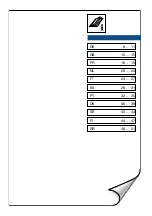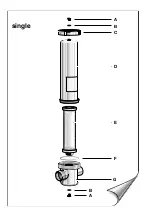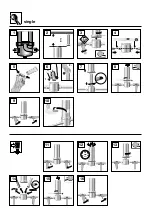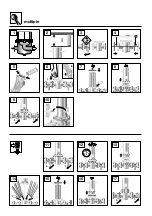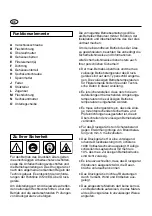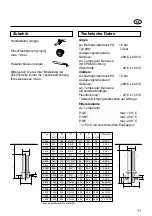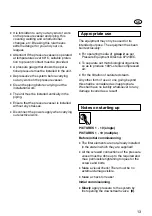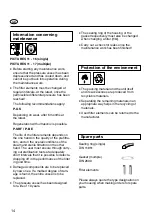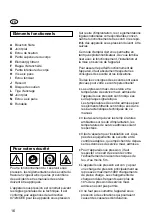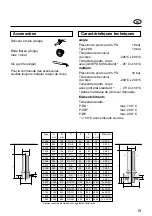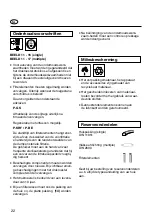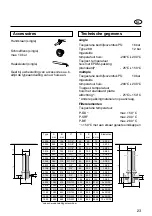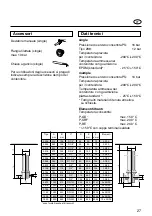
12
A
Plug
B
Gasket
C
Screw locking ring
D
Upper housing bowl
E
Filter element(s)
F
Sealing ring
G
Lower housing bowl
H
Hexagonal screw
I
Tension nut
J
Spring
K
Bracket plate
L
Tie rod
M
Gasket
N
Hexagonal nut
O
Washer
The relevant safety at work and accident
prevention regulations, plus the operating
instructions, shall apply for operation of the
pressure vessel. The pressure vessel has
been constructed in accordance with the
generally recognized rules of engineering.
It complies with the requirements of directive
97/23/EC concerning pressure vessels.
The relevant applicable national regulations in
force at the place of installation concerning
the operation and routine testing of pressure
vessels must be complied with.
You as operator / user of the unit should
make yourself familiar with the function,
installation and start-up of the unit through
these operating instructions.
It is essential that you follow these safety
notes and this information in order to ensure
trouble-free operation of the unit.
All the safety information is always intended
to ensure your personal safety!
The max. working pressure and the max.
permissible working temperature of the
pressure vessel are detailed on the type
plate.
The permissible working temperatures for
filter elements are given under Technical
data in these instructions.
Ensure that the permitted operational tem-
peratures are complied with, regardless of
the ambient temperatures prevailing at the
place of installation.
It is necessary to ensure that the unit is
equipped with the corresponding safety
and test devices to prevent the permissible
operating parameters from being exceed-
ed.
The pressure vessel must be at a safe
distance of min. 5 m to prevent heating
up in the event of a fire.
The pressure vessel has been designed for
a primarily static pressure loading with a
maximum of 1000 cycles to and from the
full load. Rapid changes of load with more
than 10% of the max. working pressure are
not allowed.
Ensure that the pressure vessel is not sub-
jected to vibrations that could cause fatigue
fractures.
The pressure vessel is not to be subjected
to stresses arising from traffic, wind and
earthquakes.
The medium used may not have any corro-
sive components that could attack the
materials of the pressure vessel in a way
that is not permitted.
All Installation and maintenance work on
the pressure vessel may only be carried
out by trained and experienced specialists.
For your safety
Functional elements
GB
Summary of Contents for P-EG
Page 1: ......
Page 2: ...DE GB FR NL IT ES PT DK SE FI GR ...
Page 4: ...A B C D E F G B A single ...
Page 5: ...A B B A D E G multiple H O O N I J M L K ...
Page 6: ...2 0 bar 3 4 5 1 2 6 7 8 1 2 11 0 10 bar 12 13 14 15 single 1 2 16 1 1 2 9 10 ...
Page 7: ...2 0 bar 3 4 5 1 2 6 2 1 9 10 7 8 2 1 11 0 10 bar 12 13 14 15 16 2 1 17 multiple 1 ...
Page 48: ...48 A B C D E F G H I J K L M N O GR ...
Page 49: ...49 1 10 single 1 10 multiple 9 GR ...
Page 50: ...50 11 16 single 11 17 multiple P GS P SRF P BE 14 single DIN 11851 multiple DIN 2690 GR ...
Page 52: ......



